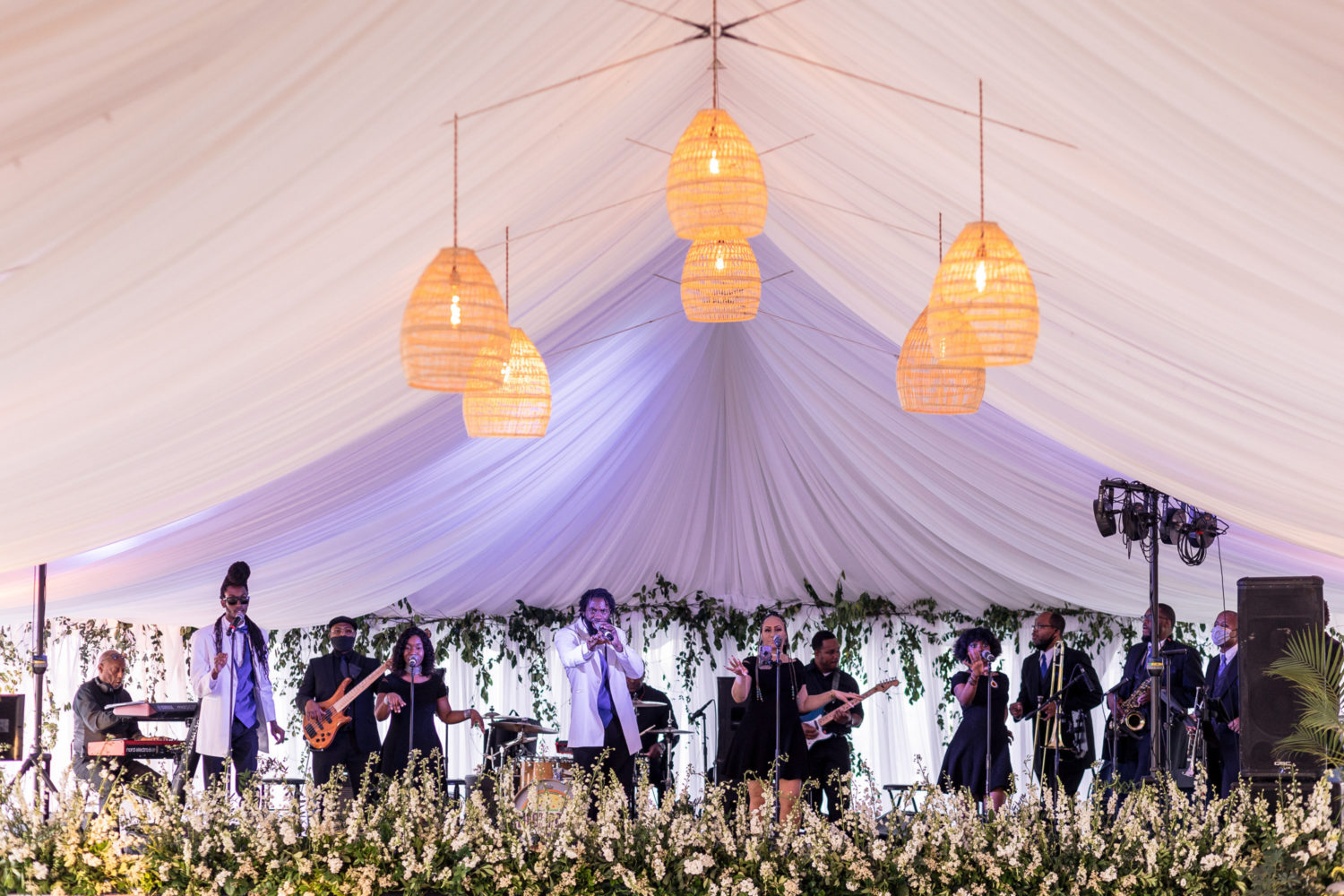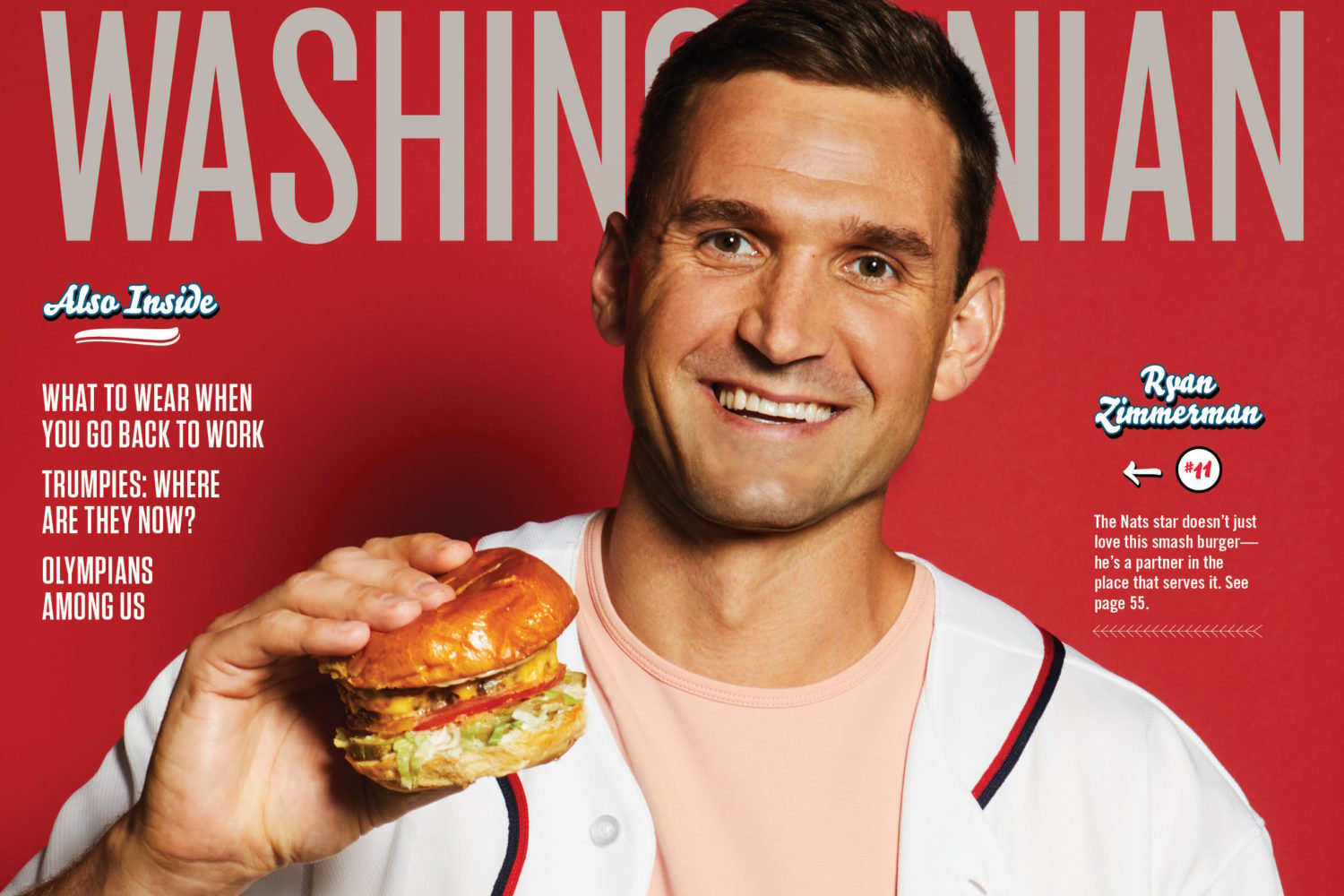WHILE LOOKING AT ENGAGEMENT RINGS through a jewelry-store window, Becky told her boyfriend, Nate, that she didn't like big diamonds. She said anything more than I carat wouldn't look right on her small hands. She didn't believe in being flashy, and she didn't want him going into debt.
She thought it'd be music to his ears.
He wasn't happy.
The 26-year-old had envisioned buying Becky a diamond of at least a carat, even if it meant financing the ring. Friends had given their fiancées more than a carat, some with side stones. Becky's sister-in-law has an "enormous" ring. What would people think if she wore less than a carat?
"It's okay if people think you're cheap because you drive a used car," says Nate. "It's not okay for them to think you don't love your fiancée enough because you didn't get the best you could afford."
He went alone to a jeweler a few months later. He looked at I-carat and 1.1-carat diamonds; both were around the same price. The smaller stone had better color and clarity. He debated for days and called female friends for advice. "Get her what she wants," one said. He chose the I-carat.
BUYING AN ENGAGEMENT RING ISN'T JUST A PURchase. From researching "the four C's" to examining diamonds under a jeweler's loupe, some couples find that emotions can run as high as prices.
"This is something she'll wear every day and show off to family and friends," says Blayne Grady, a 26-year-old lawyer at Akin Gump in downtown DC, who got engaged in January. "You don't want to mess this one up."
What if she likes platinum and he likes gold? Or his budget isn't as large as she thinks? Or she wants to use Grandma's side stones, and he prefers a solitaire?
Sometimes it helps to involve a third party. Says one local jeweler, "You have to be a shrink."
F OR SOME MEN, THE PRESSURE STARTS WITH NOT-so-subtle hints. She'll turn up the television during a jewelry ad or talk about how beautiful a friend's diamond is.
"Sometimes they'll put pictures on his pillow," says Faith Pettit-Shah of Shah & Shah Appraisers in downtown DC. Maybe they've talked about marriage; maybe they haven't.
If the man doesn't run in the other direction, he may go shopping. Although most jewelry stores take back rings for store credit or a refund, men want to get it right on the first try. After all, it's not just the woman who'll get compliments. Pettit-Shah says men aren't prepared for the "reflective glory" that goes along with giving a woman a ring.
"THE ENGAGEMENT-RING FACE." That's what Tiffany Clay, gemologist at W.R. Chance Jewelers in Annapolis, calls the look she sees when men come into the store. It's a combination of confusion and fear.
"It's like, 'I'm in the store. I'm looking at what's in the case. Please don't talk to me,' " says manager Bruce Chance.
Jewelers say most men can name the four C's–color, cut, clarity, and carat weight–because they've done research on the Internet. Some men think they know it all; others need help figuring out how those C's add up to that price.
"From a guy's perspective, you look ata diamond and go, 'It's this big, it costs me this much, and I can't drive it, watch it, or use it in any way?' " says MitchellEngle of Lynn Jewelers in downtown DC.
Engle gives customers informal Diamond 101 lessons that can last 15 minutes to an hour. In his estimation, architects and lawyers do the most research: "They get caught up in letters andnumbers."
At Shah & Shah, a fourth-generation jewelry business, most men come in by themselves and want help. They might bring in their girlfriends later.
"Most of our clients are successful in their fields," says Pettit-Shah, who sells rings to a lot of journalists, political consultants, and lawyers. "This may be oneof the moments where they are a little bit vulnerable."
Most men don't mind help. Sarah Thatch, a 26-year-old finance specialist at Accenture in Reston, tried on rings with her sister at a mall jewelry store and then told her boyfriend, Chris, about styles she liked. She cut out photos from bridal magazines. She called to make the first appointment with a jeweler.
"I knew what I could afford, but as far as I was concerned that was the end of my involvement," says Chris Thatch, 28, a part-time law student at American University. "It's her ring."
Chris Thatch, who's gone to 31 weddings in the past three years, says: "I don't know any guy who's gone out on a limb."
FOR COUPLES WHO SHOP TOGETHer, openness is key–they might not like the same rings. Blayne Grady never trusted himself to pick out jewelry. He knew that his girlfriend, Rebecca Barrick, wanted an antique ring, but he'd imagined her wearing something simple and conservative.
They went into four stores together. Grady considered it romantic. He became a fan of antiques. "Just the look on her face when she tried on the antique-style rings removed any doubt in my mind about what type of ring to buy," he says.
He got a better idea of what she wanted, and Barrick asked him to make the final choice. She e-mailed him pictures of more rings. "I really wanted him to take what I liked and find a ring he liked, too–that we had not seen together," says Barrick. He spent Saturdays shopping alone until he found what he calls "the one."
The process is not always that pleasant. A man might push his own taste. Pettit-Shah has seen women pick up rings and heard men say in response, "I'm not getting that."
WHILE THE MAN ALMOST ALWAYS pays for a diamond, Bruce Chance says women occasionally chip in when their boyfriends can't afford what they want.
Some couples don't talk about money. Nick and Kim Pomponi shopped at the Mineral Kingdom in Georgetown, where a jeweler led Nick into a separate room to get his price range–"so they knew not to bring out the four-carat," says Nick. Kim doesn't know what he spent–and doesn't want to.
Others talk about budgets from the beginning. "Your money is the same once you get married," says Sarah Thatch. "I wanted to make sure that he wouldn't be paying for my ring after the wedding. That would've been too much."
Jewelers say they occasionally meet women who ask for more than the men can afford. The woman knows his salary and savings, but she wants something out of his league.
"You wonder why they're together," says Michael Shah of Shah & Shah. "Why would she put him in a position to be embarrassed?"
Some women who want to know how much he paid–but don't want to ask–find out later. Chance has customers who come in after they've gotten engaged to ask: "So how'd I do?" Some inquire about color and clarity; others want a dollar estimate. *
SOME MEN DON'T NEED TO BUY A diamond because there's already one in the family. They might get a new setting for a stone or buy a new diamond for a family band. If the heirloom is in good condition, the couple might not change a thing.
If the ring comes from his side of the family–and she's never seen it–it's risky. Erik Oksala, a 26-year-old associate for Pace-Capstone in Alexandria, used his great-grandmother's ring when he proposed, a single, round, half-carat diamond in a yellow-gold band. His girlfriend, Lisa Kennedy, always wore silver, so Oksala figured they'd have it copied in platinumlater.
"I had a moment of doubt that it wouldn't be perfect," he says. He considered putting in a larger diamond but didn't.
"It's far better than I could have ever imagined," says Lisa. "Nobody will ever have a ring like this."
A family heirloom might mean less cost, but if the ring is from her side, it can mean extra pressure.
Six months into their relationship, Katie Simon joked with her boyfriend that she already had a ring. "As people around us were getting engaged, I'd say, 'I come with a ring! I come with a ring!' " says the 27-year-old finance manager for Black & Decker.
Simon's parents had divorced after 28 years of marriage. Simon wanted the ring, which her mother no longer wore. "I'm not superstitious," she says.
Simon told her boyfriend, Matt Trone, that her mom had the ring. It was up to Trone to get it.
He says it didn't speed up the engagement; asking Katie's mom wasn't easy. "I was embarrassed calling her up and saying, 'Can I have Katie's ring?' " he says.
Trone used the mother's diamond, added side stones, and had it reset. He knew exactly how his girlfriend wanted it. "She was an architect building this ring," he says.
His friends were jealous that he saved so much on the ring. The night they got engaged, he gave Katie diamond earrings. "Part of it was the guilt," he says.
Mike, a 31-year-old sales manager,didn't spend any money on a ring for his fiancée. He'd planned to, but when Kristy's grandmother died, her mother asked whether Kristy wanted her ring. So he got her a diamond necklace as an engagement gift.
He's glad she has a ring with sentimental value, but it's hard not getting any credit.
"The first thing she tells people is that it's her grandmother's ring," he says, laughing. "Why can't a few people think that I got it for her?"
FEELING THE NEED TO SPEND MONey isn't unusual. "I think men want to be heroes," says Pettit-Shah. Most men say they ignore the De Beers "A Diamond is Forever" ads that push them to spend at least two months' salary, but they pay attention to what friends and relatives buy. "Some actually say, 'So-and-so did this, and I want to do bigger,' " says Pettit-Shah.
According to Chance, most couples in their late twenties to early thirties spend between $6,000 and $10,000 on a ring. "Some go as low as $1,000 or as high as $30,000," he says. Older couples spend more–typically $10,000 to $15,000.
If a woman is on her second marriage, the man has a previous ring to compete with. "There's a little bit of pressure to beat what she had before," says Chance.
She might also compete. Mitchell Engle of Lynn Jewelers remembers a woman who insisted on a better diamond than her boyfriend's first wife had had. "She did not want the same shape, and the stone had to be bigger," he says.
When both people have been married before, the couple often tones down the ring or uses a family heirloom.
"It's like, 'Been there, done that,' " says Barbara, 59, who's been married to her second husband for 19 years. "The emotional part of a first engagement ring is that this is the man you're planning to spend the rest of your life with. The second time around, I wasn't going to make a big deal out of a ring." Barbara chose from a few of her husband's mother's diamonds and picked out her own setting.
FOR MANY MEN, SIZE MATTERS. ON Bluenile.com, a diamond-and-jewelry site on the Web, one link allows visitors to search for the "biggest diamond for the price." One customer told Bruce Chance that he had to get a two-carat diamond. Chance asked if the girlfriend had requested that. "No," the man replied. "That's what I want to see onher hand."
Some couples choose something smaller than they'd imagined. Kim Pomponi, a financial analyst for Clark Construction in Bethesda, always assumed she'd have more than a carat. When she tried on rings, she liked the color and clarity ofa smaller diamond.
"I never would've thought I'd have a 0.84 carat," she says. "I have two sisters; of the three of us, I have the smallest diamond. But people always tell me they can see my diamond sparkle, even in very dim light."
Couples who originally couldn't afford what they wanted sometimes upgrade the ring years later for an anniversary or birthday. "The number of people with a sentimental attachment to that first stone is shrinking," says Chance.
Washington attorney Gabrielle Duvall isn't one of those. Duvall was a 21-year-old University of Maryland student when she got engaged. Her fiancé was 22 and working for Enterprise Rent-a-Car. They had a very small budget.
She loves her 0.89-carat diamond set in 18-carat gold. "I have a lot of friends from New York," she says, "and in New York, it's like nobody gets engaged with less than two carats."
Duvall doesn't want something bigger–and her husband is just as attached to the ring he proposed with.
"For men," Duvall says, "there's an old-fashioned tie that a lot of women have forgotten."

















